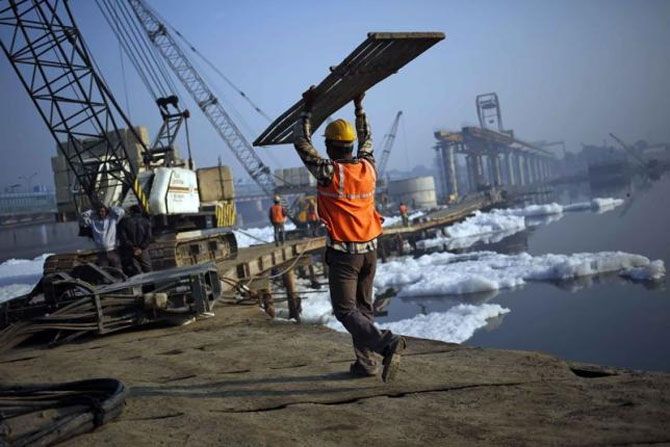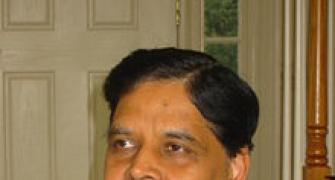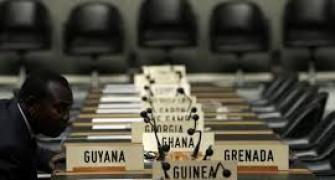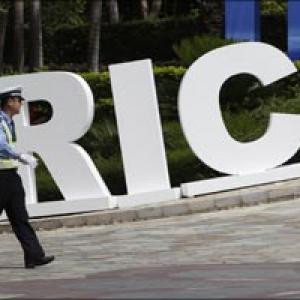Country's economic growth at 9% requires exports to rise by around 20%, says NSC chairman Pronab Sen

The double-digit economic growth is again being targeted officially this time around. Again, only the government seems to be gung-ho over such a possibility in the near future.
Finance Minister Arun Jaitley and NITI Aayog vice-chairman Arvind Panagariya are again talking of up to double digit growth at a time when even the changed methodology of calculating gross domestic product had yielded 7.3 per cent economic growth rate for 2014-15.
For the current financial year, only the government has projected the growth rate to be 8.1-8.5 per cent, other agencies have pegged it in the range of 7.5-7.8 per cent. In fact, International Monetary Fund (IMF) had projected the country's economic growth rate at just 7.8 per cent even in 2020-21.
When asked why is he so hopeful of up to 10 per cent growth for the sustain period of 15 years, Panagariya told Business Standard there are at least four reasons why he was optimistic.
"One, ending the paralysis over the ten-year period under the United Progressive Alliance, Prime Minister Narendra Modi has breathed new life into economic reforms," he said.
The second reason, he said was that the savings rate remains 30 per cent and could potentially go beyond 35 per cent, a level reached in 2007-08.
Panagariya said the third fact was that the country was still at a relatively low level of per-capita income, which meant it had a lot of room to catch up as it moves towards the global technology frontier.
"And finally, we are a young and entrepreneurial nation," the renowned pro-growth economist said.
India has recorded economic growth in double digits only one since 1951-52-- 10.2 per cent in 1988-89.
National Statistical Commission (NSC) chairman Pronab Sen said the work that the Planning Commission was doing in the 11th plan and later in the 12th plan showed them that the country's economy could grow between seven and eight per cent even without real dynamism in the global economy.
However, in order for the economy to grow beyond eight per cent requires the robust global economy.
Elaborating, he said even if the capital-output ratio of the economy improves to 4 or 4.2 from the current 4.6, the investment rate required for ten per cent growth rate would be humongous at 40-42 per cent. The investment rate had stood at 31 per cent in 2013-14.
Since production from 40-42 per cent investment rate cannot be consumed by the domestic economy, it requires sound global economy.
Country's economic growth at nine per cent requires our exports to rise by around 20 per cent, Sen said. For growth to be 10 per cent, these need to rise by 24-25 per cent.
This may seem a daydreaming to some at the current juncture when the merchandise exports contracted for six months in a row in May. Besides, the Federation of Indian Export Organisations (FIEO) sounded an alarm bell, saying that there could be lay-offs in export-oriented units.
According to the recent World Trade Organization (WTO) estimates, the world exports in volume terms increased by 0.4 per cent in the first quarter of this year, down from the 2.1 per cent growth registered in the previous quarter.
Sen also said that savings rates need to rise much beyond 35 per cent to narrow down current account deficit (CAD) to enable the economy grow 10 per cent.
Since, ten per cent growth requires investment rate up to 42 per cent, 35 per cent saving rate would leave CAD at seven per cent, a difficult task for any economy to bear.
A government adviser said double digit growth does not look as difficult since the economy grew 8.16 per cent on an average between 2003-04 to 2011-12 (after which GDP methodology changed).
When posed this query to former Prime Minister's Economic Advisory Council chairman C Rangarajan, he said the government should first eye the growth rate achieved in three years, prior to 2008-09, when the ripple effects of the global financial crisis hit India's economy.
The economy grew over nine per cent in each of those three years. In fact, the average rate stood close to 9.5 per cent.
Rangarajan said it is possible to achieve those growth rates.
Once we achieved that kind of growth rate, we can target higher at the double digit growth rate, he said.










